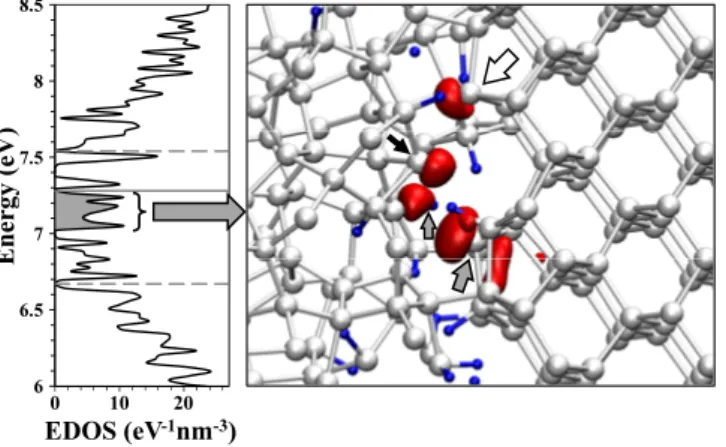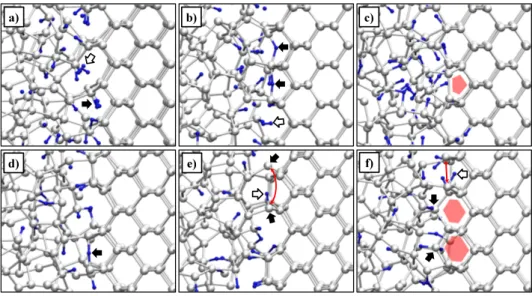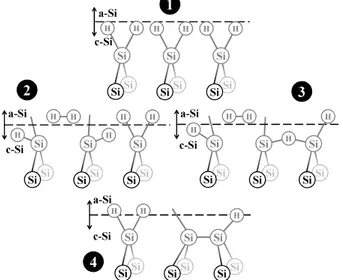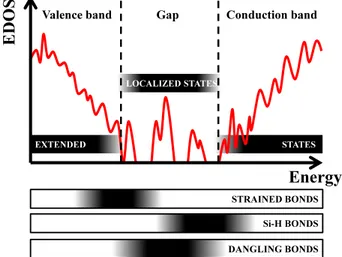Atomistic study of the structural and electronic properties of a Si:H/c Si interfaces
Texto completo
Figure




Documento similar
In addition, we get regularity results for both discrete fractional derivatives and integrals in the discrete H¨ older classes C h k,β as well as we study the behaviour of the
Thus, Yu and Che described the use of aliphatic oximes as directing groups where Pd(II) is converted into a Pd(IV) species leading to the amination of nonactivated Csp 3 –H bonds
Table 2: Most relevant C−C distances (in Å), dihedral H − C2 − C3 − H angles in adsorption (in degrees, hydrogen atoms in trans) and transferred charge from the surface to
Two different configurations of the C 60 molecule adsorbed on the Si(111)-(2×2) surface. a) Structure labelled as S 3 in the text, the molecule preserves the three fold symmetry of
At present, theoretical calculations of the interface adhesion properties of specific systems are performed either applying various methods [9] based on different approximations to
Abstract The role of intramolecular hydrogen bonds and the presence of electron withdrawing groups in the acidity of secondary aldimines and secondary ketimines
• REVILLA LOPEZ 'RODRIGUEZ ALCAIDE 'ROORIGUEZ mIRANDA 'ROORIGuEZ mOROY.. •Kull muNwAt5AL -kuil
[48,49] Figure S3 (Supporting Information) shows that, in this first regime, the number of h-bonds formed between one water molecule and a single atom in a ssDNA mole- cule,



